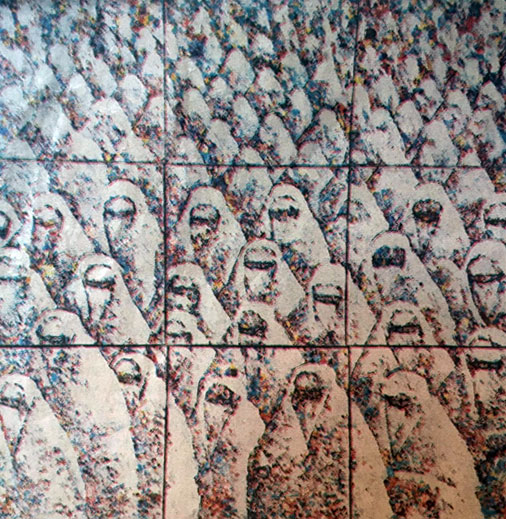Moroccan and Moscow experiences
Rafika Azzaoui, Moroccan artist, covers women not only by what looks like traditional clothing but also hides them under colored dots of paints on the canvas. What is covered? What is hidden?
Moroccan women I saw in the streets and in the offices were dressed beautifully and in many different ways. Judging by the women’s clothes, Morocco is very different from the Islamic world. The “haik” – a voluminous outer garment made of unbleached wool – is more practical than ideological. In the north of the country haik serves a shelter from the cold and wind. White garments are also worn for 40 days of mourning by widows. If I understand Rafika well, this painting addresses issues of Muslim world in general: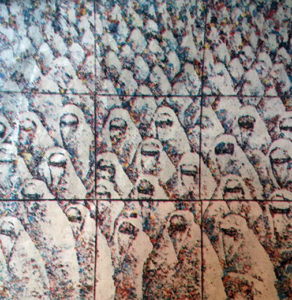
I went to this exhibition recently, “Moscow Textiles”. When looking at textile samples from Soviet Russia of the 1920s – “Young Pioneer”, “Children’s Physical Training” – I remembered again those endless rows of figures on Rafika Azzaoui painting. Young pioneers uniform and red scarfs were ideologically charged and not exactly practical clothing items. A pioneer from 1970-1980s (me, in fact ) has neither sentimental memories of those clothes, nor a slightest desire to ‘go marching, marching’.
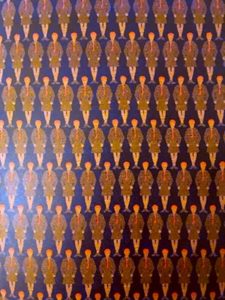
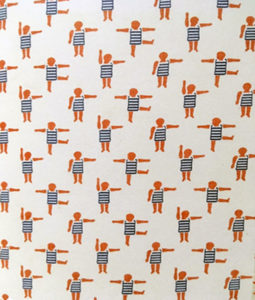
If we are speaking of the1920-30s cotton prints designs, it is not enough just to say that this is a “propaganda textile”. There are famous female names behind, “Russian avant-gard’ painters Lyubov Popova and Varvara Stepanova.
“The hypnosis of the rhythmic step”, the “primary structures” will make part of painting only in mid XX century. Thanks to the new challenge – creating ornaments for soviet textile industry – Popova, Stepanova and others had done in 1920s what ‘op-art’ and minimalists only did in 1950-1960s.
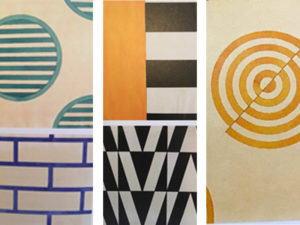
Several generations of women, through employment in the textile industry, both in “tsarist” and Soviet Russia, have slowly but surely moved towards active social life and creativity. In Russia, there were no loud performances of suffragettes, and “women’s issue” has always been approached differently than in the West. At the same time, women artists have changed the world with the help of lines and colours. They did it a hundred years ago, and today, in Russia and in Morocco.
For foreign friends, just in case, I note that now all Moscow textile factories are closed, production buildings are converted into various service centres and offices.
This is not only a “change of times”, the result of the Soviet bureaucratic machine’s grip: endless ‘visas’ on fabric sketches were required before production launch, original designs would change beyond recognition. The new generations of designers were not interested in production, enterprises became economically unprofitable. After the collapse of the Soviet Union, all Moscow textile factories stopped.

